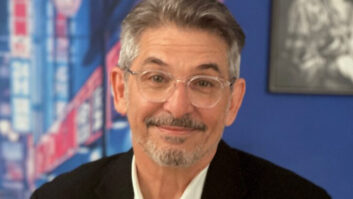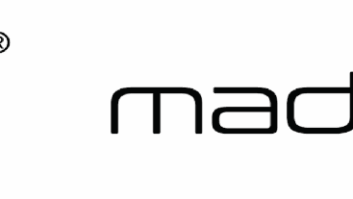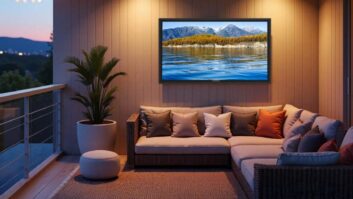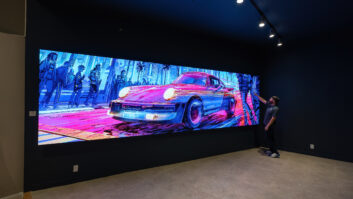More content and multi-industry cooperation are needed to get the nation’s transition from analog to digital television broadcasting on the fast track to broad-based national acceptance.
That was the conclusion expressed by a majority of multi-industry leaders participating at the Consumer Electronics Association (CEA) coordinated DTV Summit, titled “The DTV Transition — Is Laissez-Fare Fair?”
Regarding the event’s central question, panelists offered divergent positions, with representatives of the broadcasting industry, including Jim Goodmon, president of Capitol Broadcasting, and David Donovan, new president of MSTV — an association of television broadcasters and broadcast groups —continuing to advocate DTV must-carry mandates for cable and satellite providers and requirements that DTV tuners be included in all televisions.
In expressing concerns of CEA, Bob Perry, Mitsubishi marketing VP, said that more content and cable carriage are critical to continued success, but warned that DTV tuner requirements for all televisions would, in the near term, price products beyond the reach of those who can least afford them.
He also countered claims that competition would drive such costs down to affordable levels, by stating it takes five to six years for the cost of integrated circuits to be scaled down to levels that would seem transparent to buyers. At today’s rates, he said, the average analog television set could cost between $600 and $1,000 more if laws required an integrated DTV tuner.
However, costs should hit the affordable range by the time the country is ready to switch off analog broadcasting, which is now slated for 2006, he added.
Still, CEA officials, CE manufacturers and Capitol Broadcasting’s Goodmon said that despite some setbacks, advances continue to be made.
Good news came from recent agreements among Hollywood’s largest studios, who have now or are expected to shortly accept Digital Transmission Content Protection (DTCP) copy protection technology to ensure against illicit duplication and distribution of programming over closed digital systems, such as direct-to-home satellite and digital cable, using IEEE-1394 digital connectors.
Broadcasting representatives who attended the DTV Summit, however, continued to demand copy protection and water marking systems to prevent the unauthorized redistribution of their over-the-air signals via the Internet.
Government representatives warned broadcasters and cable providers to step up their efforts to provide digital television signals (including HDTV) or risk federal mandates.
Keynote speaker U.S. Senator Conrad Burns warned that Congress would act on cable carriage legislation if the cable industry does not respond to market forces and agree to carry HDTV.
Federal Communications Commission Plans & Policy Chief Robert Pepper warned broadcasters “the rush [to begin digital broadcasting] is for the survival of your business.”
Neal Goldberg, National Cable and Telecommunications Association (NCTA) general counsel, said the reluctance of some cable operators to put up digital television programming (including HDTV) was the lack of compelling content so far.
Representatives of CEA’s market research department also issued updated consumer surveys showing DTV awareness and satisfaction levels were, for the most part, continuing to grow from previous studies.
The market research report was split between consumer perspectives of DTV and DTV owner satisfaction.
In the perspectives section was a finding that consumers who elected not to buy a digital television were put off most by high cost (55 percent), the need for additional equipment (34 percent), lack of programming so far (26 percent) and lack of HDTV programming over cable (24 percent).
However, having programs watched most often in HDTV format (56 percent overall), being able to get HDTV through cable or satellite (56 percent) and being able to record HDTV programming (45 percent) ranked as the most important factors going forward, among consumers who considered a digital TV during their last TV purchase.
One negative finding showed the number of consumers who were planning to purchase a TV next year slipped from 21 percent last September to 19 percent in July, and the number of those who expect their next TV to be a DTV slipped from 62 percent in September to 54 percent in July.
Cited as possible reasons for the decline were greater awareness among consumers of the declining cost of digital TV, the sluggish economy and the proliferation of other technologies, such as computers, PDAs, digital camcorders and cameras and DVD players, competing for consumer dollars.
Meanwhile, the association said that while sales of analog televisions were down somewhat from last year, the growth of digital TV products is more than making up the difference from last year’s levels.
Among DTV owners the two most important factors for consumers who have considered buying a HDTV are having the programs they watch most often available in HDTV format and being able to get HDTV programming through cable or satellite providers.
The research also concluded that consumers are looking more and more favorably at the purchase of a large screen TV, but a significant portion of the population, that would never consider buying a big-screen, views DTV as a big-screen format.
“Overall, 43 percent of consumers say their next TV will be larger than the last TV they purchased. This figure is pretty consistent when looking at it by the size of consumers’ most recent TV purchase,” CEA’s report stated. “However, it appears that consumers’ appetite for larger TVs does significantly diminish above the 35-inch screen size.”
The report recommends manufacturers provide “a variety of sizes to meet the needs of all consumers.”
Among DTV set owners, the study found the percentage of owners who feel their DTV “greatly exceeded expectations” rose from 19 percent last October to 20 percent. Those who felt it was “definitely worth the investment” jumped from 10 percent last fall to 22 percent, and those who would definitely buy again from 66 percent to 77 percent.
“Nearly 100 percent of DTV owners claim that if they had to do it over again, they still would have purchased a DTV,” the report said.
Among owners, 78 percent found the amount of available HDTV programming unfavorable.
“A super majority of owners made the investment in DTV to enjoy the ultimate home entertainment experience,” the report concludes, “and it appears they have not been disappointed as nearly 100 percent rate the picture quality as good or excellent.”













